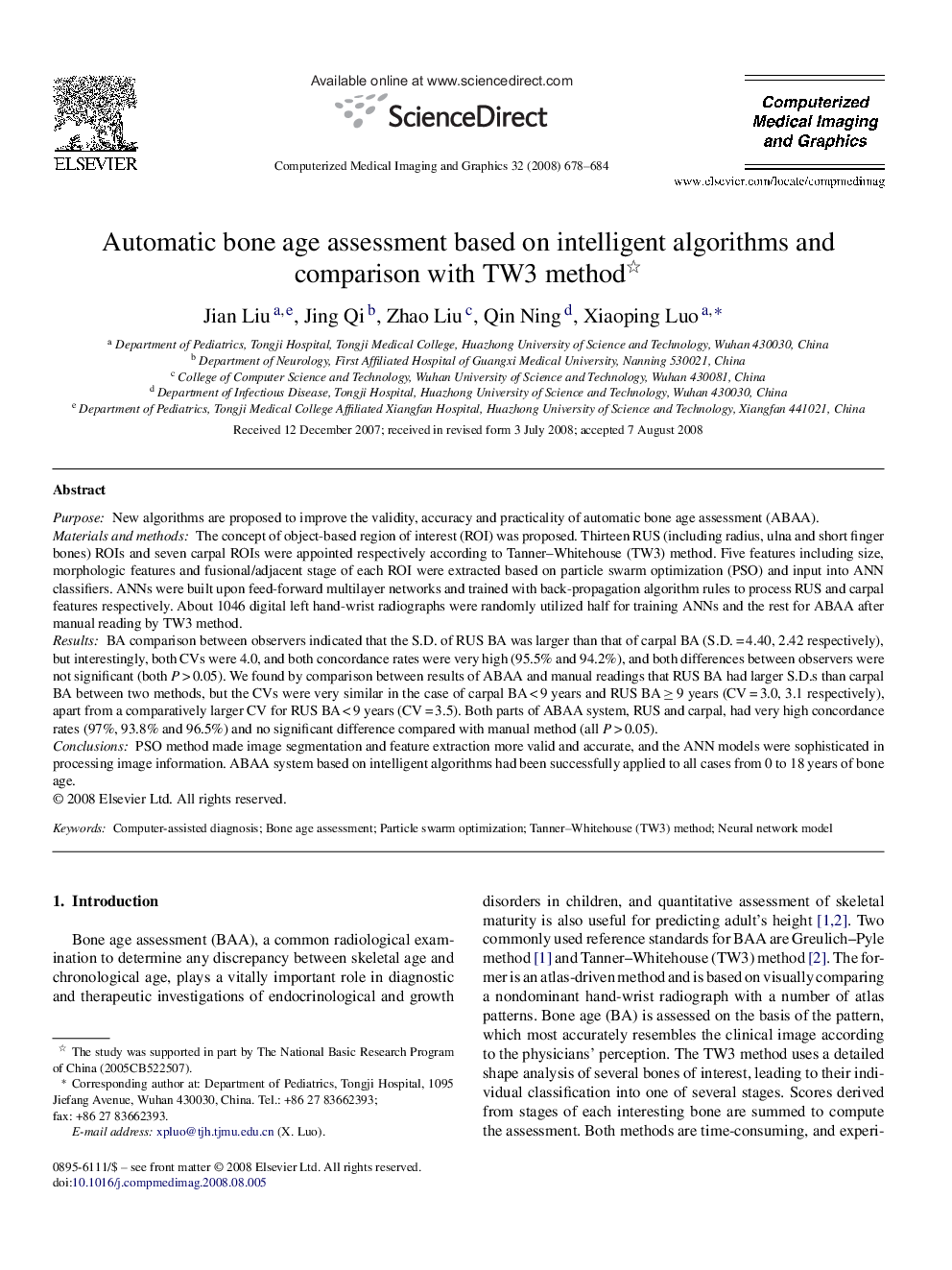| Article ID | Journal | Published Year | Pages | File Type |
|---|---|---|---|---|
| 504549 | Computerized Medical Imaging and Graphics | 2008 | 7 Pages |
PurposeNew algorithms are proposed to improve the validity, accuracy and practicality of automatic bone age assessment (ABAA).Materials and methodsThe concept of object-based region of interest (ROI) was proposed. Thirteen RUS (including radius, ulna and short finger bones) ROIs and seven carpal ROIs were appointed respectively according to Tanner–Whitehouse (TW3) method. Five features including size, morphologic features and fusional/adjacent stage of each ROI were extracted based on particle swarm optimization (PSO) and input into ANN classifiers. ANNs were built upon feed-forward multilayer networks and trained with back-propagation algorithm rules to process RUS and carpal features respectively. About 1046 digital left hand-wrist radiographs were randomly utilized half for training ANNs and the rest for ABAA after manual reading by TW3 method.ResultsBA comparison between observers indicated that the S.D. of RUS BA was larger than that of carpal BA (S.D. = 4.40, 2.42 respectively), but interestingly, both CVs were 4.0, and both concordance rates were very high (95.5% and 94.2%), and both differences between observers were not significant (both P > 0.05). We found by comparison between results of ABAA and manual readings that RUS BA had larger S.D.s than carpal BA between two methods, but the CVs were very similar in the case of carpal BA < 9 years and RUS BA ≥ 9 years (CV = 3.0, 3.1 respectively), apart from a comparatively larger CV for RUS BA < 9 years (CV = 3.5). Both parts of ABAA system, RUS and carpal, had very high concordance rates (97%, 93.8% and 96.5%) and no significant difference compared with manual method (all P > 0.05).ConclusionsPSO method made image segmentation and feature extraction more valid and accurate, and the ANN models were sophisticated in processing image information. ABAA system based on intelligent algorithms had been successfully applied to all cases from 0 to 18 years of bone age.
